Blueair Blue Pure 211+ Review
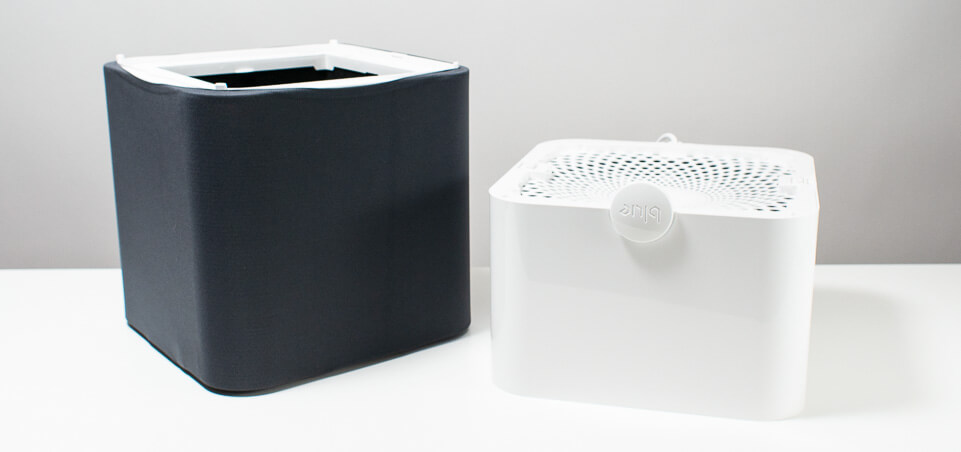
Feature Scores
Pros
- High CFM
- Good energy efficiency
- Low noise output considering its high CFM
- Good build quality
- Good warranty – 5 years if you register it with the manufacturer
Cons
- Pre-filter wraps around the exterior of the unit – so if it gets dirty it directly affects what the unit looks like.
- Only 3 fan speeds
- No timer, no remote, no smart functionality
- No HEPA filter – comes equipped with a proprietary particle filter instead
Editor's Score
Quick Facts
| Particle filter type | Proprietary |
|---|---|
| Gas filter type | Carbon |
| Pre-Filter | Fabric |
| Output | Approx. 360 CFM |
| Air Movement | Fabric pre-filter > metal grille > particle filter > carbon filter |
| Number of fan speeds | 3 - low, medium, high |
| Size | 20.5 in. tall x 13 in. wide x 13 in. deep |
| Weight | 15 lb. |
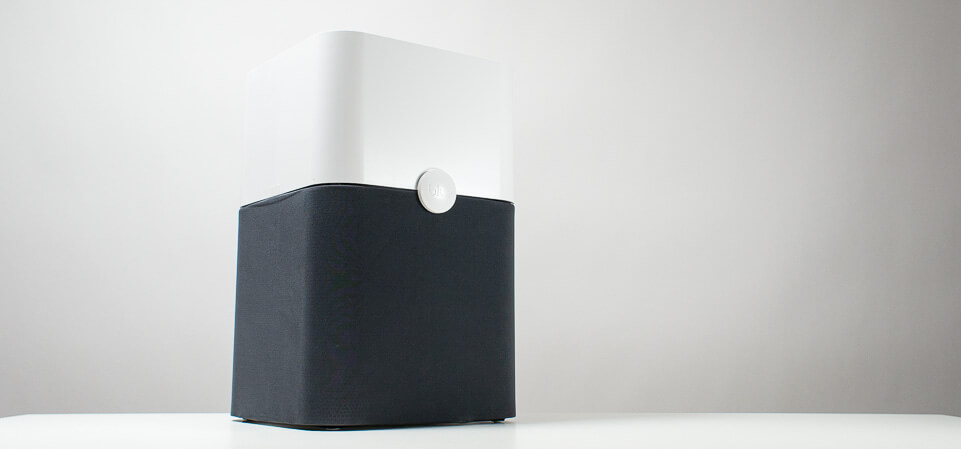

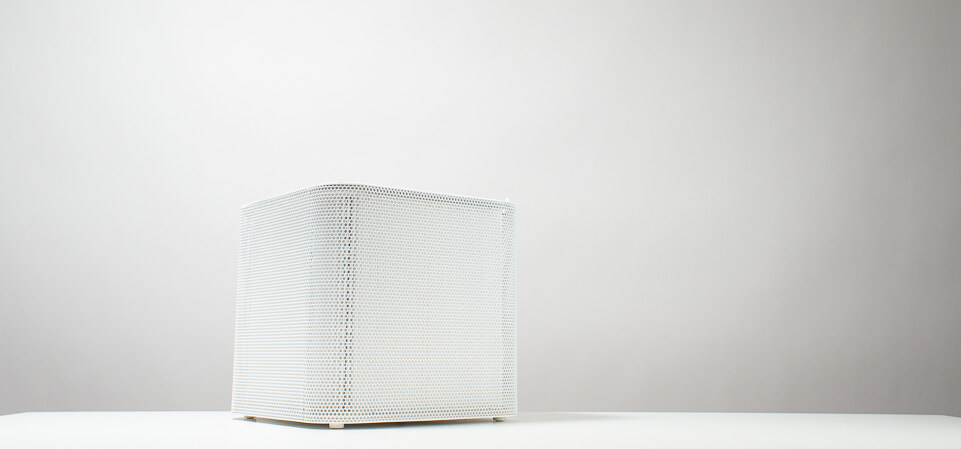




Analysis
A step by step breakdown of the Blue Pure 211+'s performance.
Air Processing Performance
Test Results
In a 150 sq. ft. test environment, the Blueair Blue Pure 211+ with approx. 360 CFM was able to lower room particle concentration from 10,000 particles per cubic ft. (relatively unclean air) to 1,000 particles per cubic ft. (very clean air) in 8 minutes. For comparison, the approx. 430 CFM Coway AirMega 400s did so in 4 minutes. Top rated 250 CFM units like the Coway Mighty and Winix 5500-2 did so in 10 and 9 minutes, respectively. The Blueair Blue Pure 411 with approx. 120 CFM did so in approx. 18 minutes.
The correlation between CFM (the amount of air – cubic feet of air - the unit processes each minute) and the time taken to lower room particle concentration is apparent. High CFM units did so faster while low CFM units did so slower. The 211+ is a higher CFM unit. It lowered room particle concentration much faster than the much lower CFM Blue 411, slightly faster than 250 CFM units, but not quite as fast as the highest CFM unit we’ve tested – the Coway AirMega 400s.
The second part of this test involved allowing the air purifier to continue to run to see how low of a particle concentration it was able to achieve. Most units we tested were able to get to the lowest concentration we were able to comfortably measure – 100 particles per cubic ft. The Blue 211+ was one of these units. It took an additional 27 minutes to reach this concentration. So in summary, the 211+ took 8 minutes to lower room particle concentration from 10,000 particles per cubic ft. down to 1,000 particles per cubic ft. and an additional 27 minutes to lower it from 1,000 particles per cubic ft. down to 100 particles per cubic ft.
Filter Analysis
Particle Filter
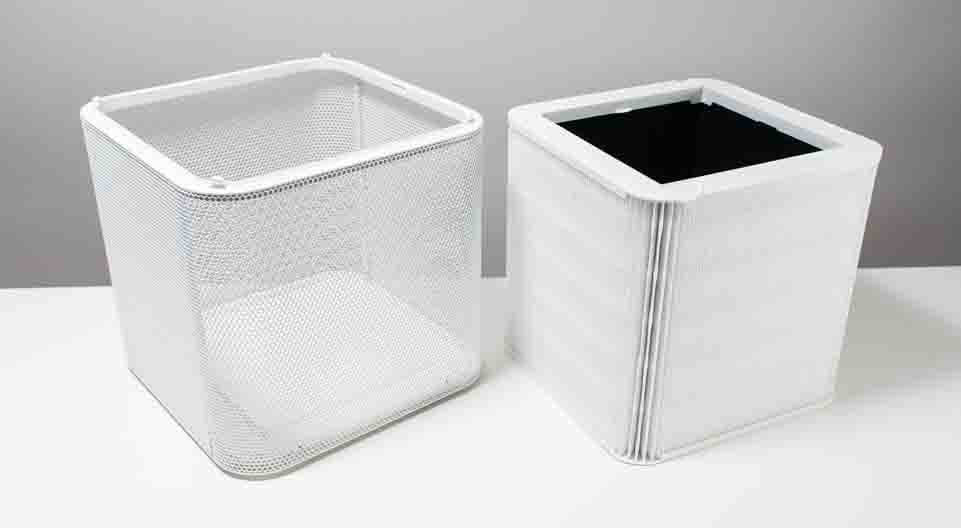
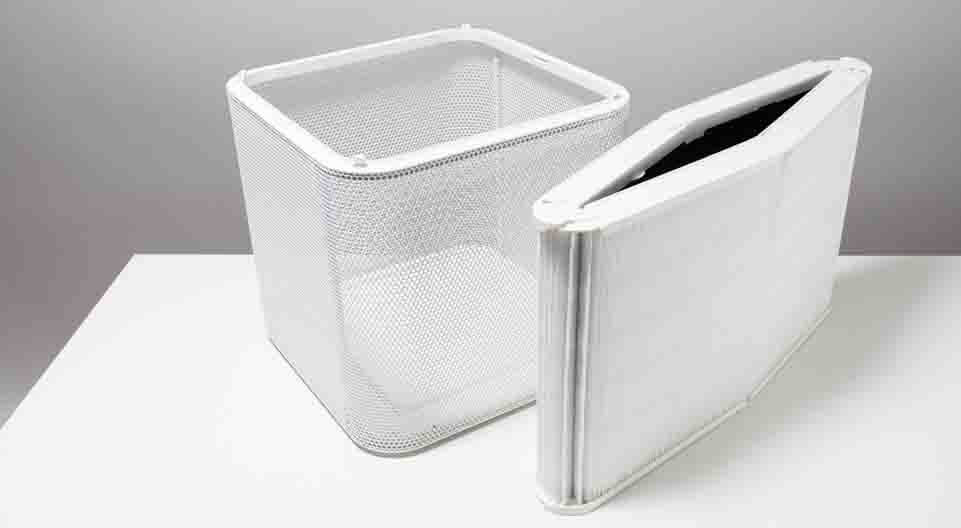
The Blue Pure 211+ along with all other Blue Pure models (including the 411) feature a proprietary particle filter (for filtering out particles like allergens, dust, and mold). The manufacturer claims that this proprietary filter effectively removes up to 99% of particles that travel through it.
Most other air purifiers on the market in the same price range come equipped with a HEPA filter. A HEPA filter removes up to 99.97% of particles that travel through it. At first glance this many not seem like much of a difference compared to 99%. However, consider these percentages on the microscopic scale.
Air often contains at least 10s of thousands of particles. Our own testing involved a starting point of 10,000 particles per cubic ft. In a 150 sq. ft. test space with approx. 10 ft. ceilings this translates into 15 million particles in the air in the space (150 sq. ft. x 10 ft. = 1500 cubic ft. x 10,000 particles in every cubic ft. = 15,000,000 particles).
A filter with 99% efficiency allows 150,000 (1%) of these particles to pass through the filter on its first pass. A filter with 99.97% efficiency allows only 4,500 (0.03%) of particles to pass through.
The point is that on the microscopic scale where the filter is doing the work of removing particles from the air, a HEPA filter with 99.97% efficiency is much more efficient than the proprietary particle filter installed on the Blue Pure 211+ (with only 99% efficiency).
Thus, if particle filtration is a priority for you, we recommend a HEPA equipped unit over the Blue Pure 211+. Options include the higher CFM and also higher priced Coway AirMega 400s, the slightly lower CFM Coway Mighty or Winix 5500-2, and many others.
Gas Filter
The Blueair Blue Pure 211+ comes equipped with a carbon filter to facilitate gas filtration (removal of unwanted gases like odors and VOCs). Carbon is the standard for gas filtration in the air purifier industry.
The aforementioned Coway Airmega and Mighty, the Winix 5500-2, and most other air purifiers on the market all come equipped with carbon filters for the purpose of gas filtration.
The difference between them lies in how and the level to which carbon filtration is implemented. Some units have carbon filters that involve a fibrous material simply being coated with carbon. Other units have carbon filters that involve a plastic frame holding actual carbon pellets. The former implementation (fibrous material coated with carbon) is what we found implemented on the 211+. Unfortunately, this type of implementation is not as effective at removing gases as the latter implementation – a filter containing actual carbon pellets.
Thus, if gas filtration is a priority for you, we would steer you away from the Pure 211+ and towards a unit with a gas filter with actual carbon pellets. The Coway AirMega and Winix 5500-2 are strong contenders here. Both have carbon filters that contain actual carbon pellets. Either unit is a great option if gas filtration is important to you.
Pre-filter
The Blue Pure 211+ has a very unique pre-filter. The pre-filter is a washable colored fabric that wraps around the bottom half of the air purifier much like a sock fits around a foot. The pre-filter covers the metal grille that intakes air on all four sides of the air purifier.
Most other air purifiers on the market, especially in the same price range, also come equipped with a pre-filter. But the pre-filter on most other units is fitted after the intake grille, not before it. The pre-filter is usually not a fabric either. On units like the Coway AirMega, Coway Mighty, and Winix 5500-2 the pre-filter is a mesh grille fitted inside a plastic frame.
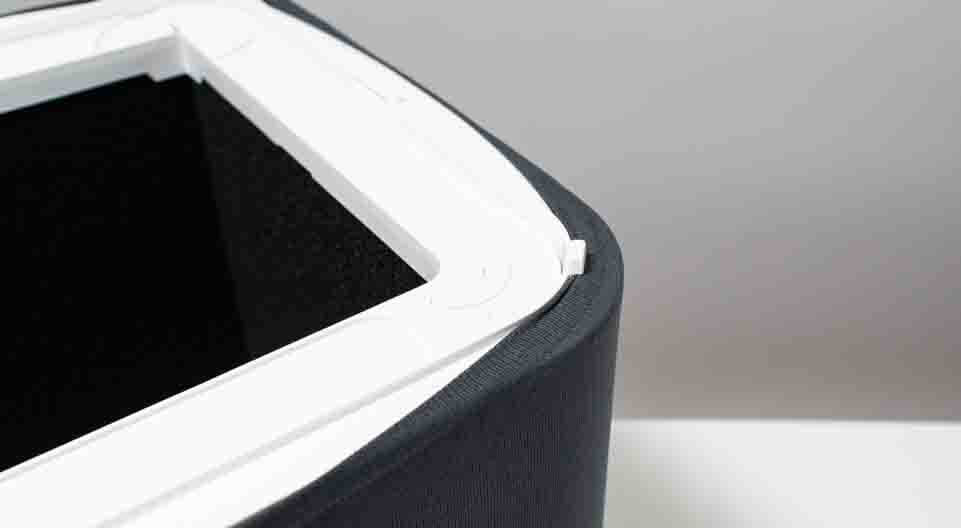
So, which type of pre-filter is better – the fabric pre-filter of the Blue 211+ (and all other Blue Pure units as well, including the 411) or the mesh pre-filter of most other air purifiers on the market in the same price range?
In terms of filtration quality, there’s not much of a difference. The pre-filter’s purpose is to filter out larger particles (usually larger than 1 micron in diameter) to keep the primary particle filter (this is a proprietary particle filter in the 211+ and a HEPA filter in most other units) from saturating quickly with large particles. This is not a difficult thing to do, and so by inspection alone we can comfortably say the 211+’s fabric pre-filter does it just as well as other units’ mesh pre-filter.
Outside of filtration quality, there are pros and cons to each type of pre-filter. The 211+’s fabric pre-filter is located on the exterior of the air purifier, so changing the color of the pre-filter changes the look of the air purifier. It’s not surprising then that there are multiple color pre-filters available for the 211+ should you choose to change its look over time. The fabric pre-filter can also easily be washed in a washing machine. Mesh pre-filters need to be rinsed in a sink.
On the negative side of things (for the 211+), a lot of large particles (hairs, fibers, etc.) collect on any pre-filter. Thus, the 211+ with its external pre-filter will start looking dirty much sooner than an air purifier with an internal pre-filter.
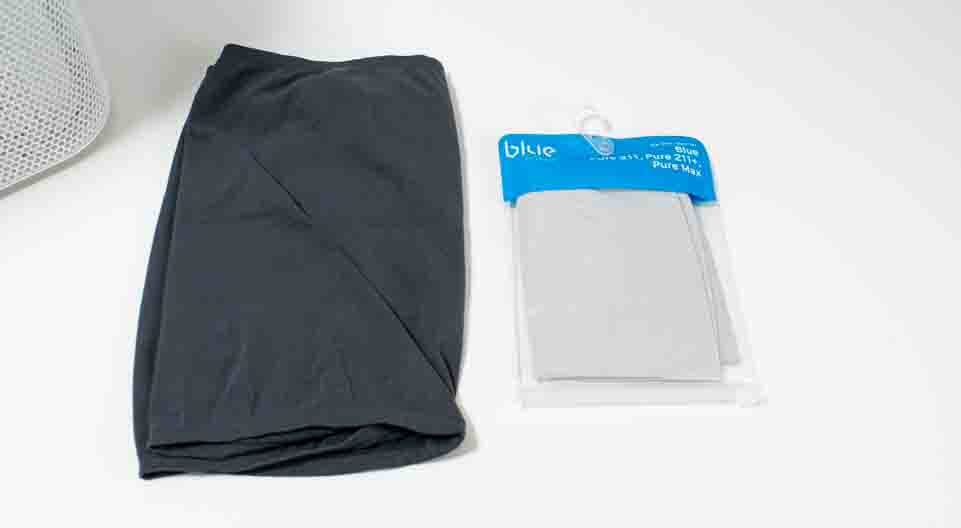
Air Movement
Even with 360 CFM of total output we do not recommend the 211+ for any room larger than 300 sq. ft.
Most other consumer publications will tell you the unit can clean the air in rooms upwards of 400, even 500 sq. ft. Why do we disagree?
Simply because our testing in larger rooms demonstrated that no single air purifier should be used in rooms larger than 300 sq. ft. A single air purifier provides one inlet (to intake dirty air) and one outlet (to distribute clean air) in one location. Past 300 sq. ft., this starts becoming problematic.)
So, what do we recommend for larger rooms?
We recommend two lower CFM units over a single higher CFM unit like the 211+. The best option is two 250 CFM units, specifically. Two top rated 250 CFM units (eg. two Winix 5500-2’s) give you a total of 500 CFM spread out over two locations. Two Winix 250 CFM units are also close to the same price as the 211+, so you’re actually getting more CFM per $ spent should you go this route over a single high CFM unit.
Energy Efficiency
The 211+’s energy efficiency is a bit of a mixed bag.
On its highest fan speed it’s very energy efficient – one of the most energy efficient air purifiers we’ve tested. We use CFM/watt ratio to evaluate energy efficiency. The greater the ratio – the greater the CFM per watt used, the better the energy efficiency. The 211+ has a ratio of 5.8 (5.8 CFM per watt used) on its highest fan speed.
Compare this ratio to 4.6 for the Winix 5500-2 and 3.4 for the Coway Mighty. Among all the air purifiers we’ve tested so far, only the Coway AirMega has a better ratio – 6.9 CFM per watt used on its highest fan speed.
Overall power draw is fairly low for all air purifiers even on their highest fan speed. The 211+ draws only 62.4 watts on max. settings. The AirMega draws 60.5, the 5500-2 draws 54.8, and the Coway Mighty draws 72.3. The only part of the air purifier that needs a substantial amount of power is the fan as it’s the only moving part (the control panel barely draws any power), and fans don’t require much power.
On lower fan speeds the 211+’s energy efficiency is much less impressive. On medium its CFM/watt ratio is 5.6. On low it’s 4.1. Top rated 250 CFM units like the Winix 5500-2 and Coway Mighty have ratios upwards of 10 to 20 on lower fan speeds. Note that this says more about these top rated 250 CFM units than it does the 211+.
Most air purifiers we tested had ratios of 2 to 4 on lower fan speeds. Thus, the 211+’s ratios of 5.6 and 4.1 are actually quite good compared to most other units on these lower settings. The Winix 5500-2 and Coway Mighty are just incredible performers on lower fan speeds compared to all other air purifiers on the market, including the 211+.
Noise Output
The Blue Pure 211+ performed quite well in our noise output test on its highest fan speed. On high it was measured at 66.7 dB. For comparison, the Coway Mighty, AirMega, and Winix 5500-2 all had a measured noise output of 66 to 68 dB on the same setting (high fan speed).
The main issue with the 211+, as it pertains to noise output, is the fact that it doesn’t have a super low fan speed setting where it barely makes any noise. Even on its lowest fan speed it still makes a substantial amount of noise with a measured noise output of 47.2 dB.
Comparable units did much better on lower settings. The Coway Mighty, AirMega and Winix 5500-2 all had a measured noise output of approx. 40 dB.
40 dB is essentially “whisper quiet”. 47.2 dB is not.
Why was the 211+ louder on its lowest fan speed? The answer: motor hum. We noticed a distinct fan motor noise – a low hum – when running the unit on its lowest fan speed. On medium and high it’s still there but difficult to hear on top of the fan noise. On low fan speed you can definitely hear it, and it’s what’s primarily responsible for the unit’s higher noise output on the same setting.
Durability
The 211+ is a very well-built appliance. The materials used for its construction are of a very high quality. Placing this unit side by side with any other air purifier on the market, you will find few other units that look to be a higher quality than the Blue Pure 211+.
The 211+ also comes with a very good warranty – 5 years if you register your purchase with the manufacturer. Units like the Coway Mighty and Winix 5500-2 have similar build quality but do have much shorter warranties. The Coway’s warranty is only for 3 years and the Winix’s warranty is only for 1 year.
If durability and/or long-term reliability is a priority for you, the 211+ is a great option.
Ease of Use
The 211+ is, at first glance, very easy to use. A single button controls all settings. You tap the button once to turn it on and tap it repeatedly to adjust fan speed between low, medium, and high.
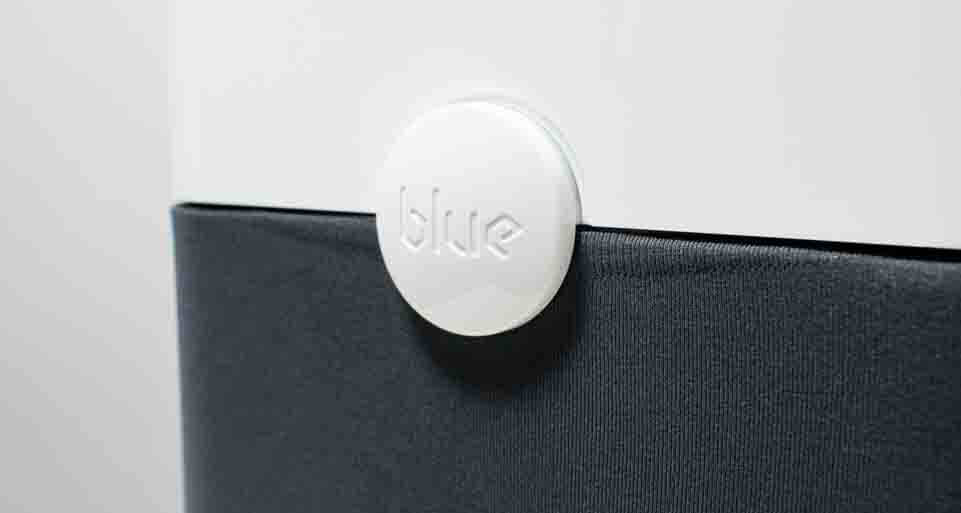
The 211+ is not as easy to use once you start analyzing its overall form and functionality a little bit more closely and you start comparing it to other air purifiers on the market.
First of all, it’s not very portable. It’s not very heavy – only 15 lb. – but it has no handles. You have to pick it up from the bottom which can be quite awkward. Most other air purifiers have at least one handle.
The 211+ is also just as deep as it is wide – about 13 inches. Most other air purifiers are just as wide but not nearly as deep. The 211+’s depth increases the difficulty of picking it up and moving it from one location to another.
The 211+ also lacks many features, especially considering its high price. It doesn’t have a timer. Most other air purifiers do come equipped with a timer. The 211+ doesn’t come with a remote. Many other air purifiers in the same price range do come with a remote. The Winix 5500-2 is about $100 cheaper and comes with a remote. The 211+ also doesn’t come equipped with smart functionality (wireless control via an app). For its price we would have liked to see this implemented.
As a final note, the 211+ has three LEDs that light up as you increase fan speed. On low, only one LED lights up. One medium, 2 light up. On high, 3 light up. There’s no way to turn these LEDs off.
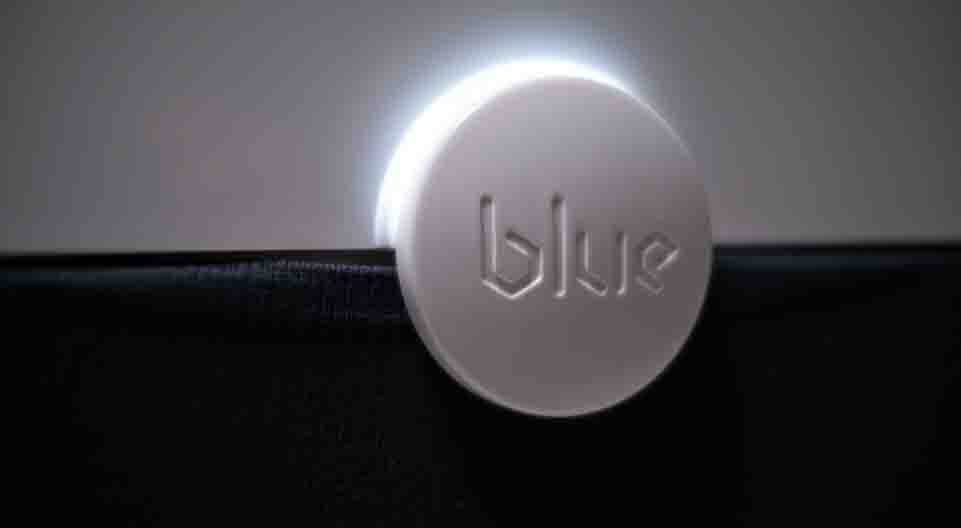
Value
The Blue 211+ is a poor value. It retails for the price that it does because of its well above average approx. 360 CFM. But, as we talked about earlier, you can buy two top rated 250 CFM units for a total of 500 CFM for roughly the same price. Thus, making the one big reason why you would want to spend more on the 211+ (high CFM) a moot point.
The unit does offer fairly good energy efficiency and filters are reasonably priced – it’s about $50 for a replacement filter. However, the filter is a combination particle and gas filter. This means that you have to replace the whole filter when only one of its components – the particle or gas filter component – saturates.
The part of the filter that usually saturates first is the gas filter. When it saturates you have two options: have little to no gas filtration but continue to use the single combination filter for particle filtration OR replace the whole filter at a cost of approx. $50.
Most other air purifiers on the market, including top rated units like the Coway Mighty and Winix 5500-2 separate the particles and gas filters. Thus, if one of the filters saturate – again, this is usually the gas filter – you only have to replace that one filter, usually at a lower cost than replacing both filters.
All of this is to say that we do not recommend the Blue 211+ if value is a priority for you. Better options include the Coway Mighty and Winix 5500-2. Two of these units are recommended for rooms larger than 300 sq. ft.
Add a Comment
Have a question or comment? Let us know below.

Comments (2)
You note the filter has 99% efficiency compared to a true Hepa filter with 99.97% efficiency. Yes, a big difference. But, doesn’t this difference effectively reduce with each full cycle of air until it almost is identical?
Secondly, what I don’t understand is that the size of particles which can be trapped by most Hepa air purifiers is .03 microns while this Blueair goes down to .01. How is this possible with a less efficiency filter of 99%?
Consumer reports have tested both the Winix and Coway. However, actual test results show that the Blueair 211 does a better job at both low and high setting for removing smoke and particulate.
The Blueair filter 99% efficiency probably helps with power consumption and more CFM IN CADR 400 cfm. Aham verified. I owned 5 of then due to the wildfire here. So bad. Like you said, multiple low energy units is better than one giant. Have to consider power consumption.
Also the WhirldPool AP51030k was once rated top by Consumer Reports. Now they have an upgraded version of activated carbon and hepa filter combined for sale on Amazon. But power consumption is around 115w, and cadr is like 300 cfm.